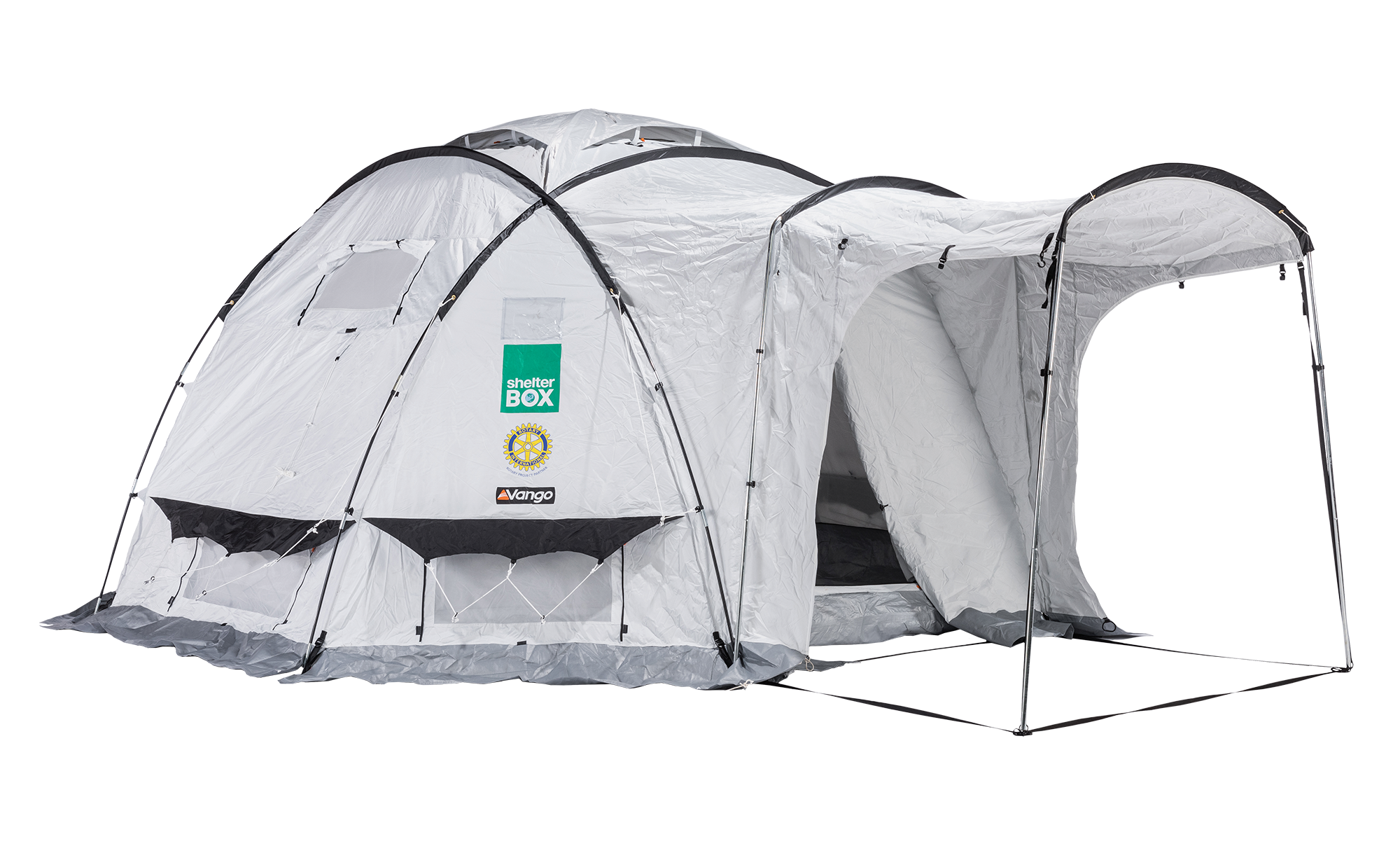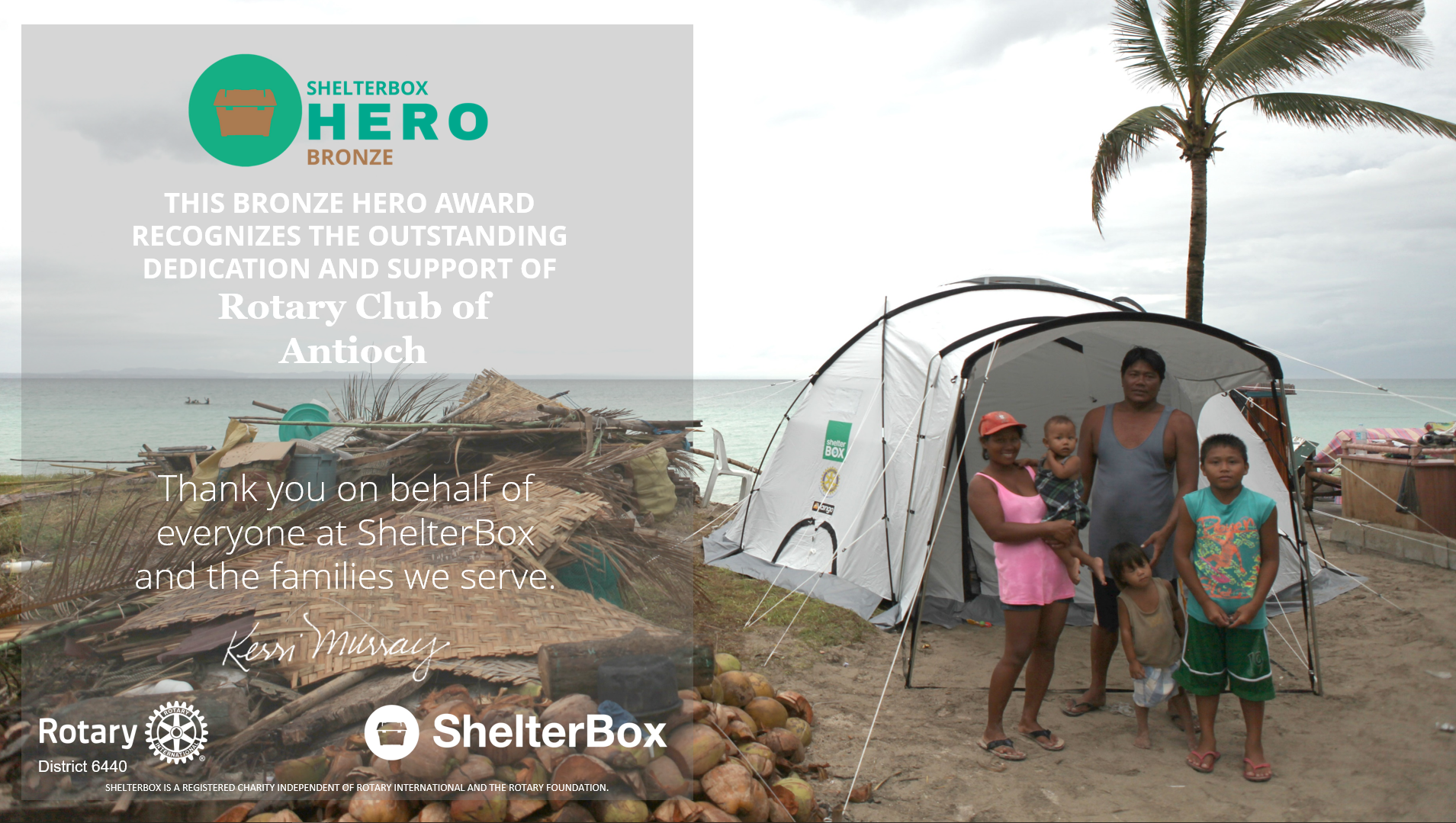

ShelterBox, an internationally known disaster relief organization and one of Rotary's key partners, originated as a Rotary club project that aimed to help eight to 10 families a year.
But support from Rotary members and clubs during the past two decades has helped ShelterBox achieve the flexibility and scale to serve more than 2 million people who have survived environmental disasters and conflicts around the world.

It's "a shining example of what Rotarians and Rotaractors are able to accomplish" as Rotary and ShelterBox work together and leverage each other's expertise, says Alex Youlten, the Rotary partnership manager at ShelterBox.
Rotary members have an enormous role in ShelterBox's response strategy. The first call ShelterBox makes after a disaster is often to a local Rotary or Rotaract club in order to activate their extensive networks. And many of ShelterBox deployments involve Rotary members.
Aid from ShelterBox can arrive in many different ways, sometimes in signature green crates or as kits that may be hand-delivered by volunteer teams that travel by boat, helicopter, tuk-tuk, or foot to get to wherever the resources are needed. The boxes, which include both ShelterBox and Rotary logos, contain family-sized, weather-appropriate tents designed to withstand the elements and equipment like solar lights and cooking sets.
Beyond those who volunteer for direct response work (which requires a rigorous training program) Rotary acts as a "response multiplier." This means Rotary members provide situational updates, help ShelterBox responders understand local events, and connect the responders with drivers, other transportation, accommodations, and interpreters. Rotary members help resolve customs and import challenges, organize storage or warehouse space, introduce ShelterBox teams to key local or central government figures, and more.
Rotary clubs and volunteers also play a critical role in the long-term response. These community-based leaders work with people on the lengthy effort to build a sustainable recovery — especially after emergency response agencies have completed their core work of stabilizing the community.
"Shelter is a process, not a product," Youlten notes. "We focus on emergency shelter and supporting communities in staying together so people have both the physical and emotional space to think about what comes next. But we're also providing combinations of aid, packaged in a variety of ways, to better meet the needs of the people we support. Our partnership with Rotary is fundamental to the work of helping a community get back on track."
The exchange of knowledge between the organizations goes both ways. Rotary and Rotaract clubs learn from ShelterBox experts how to convert good intentions and the desire to act quickly into a durable and effective response that is based on logistics preparation, community needs, and coordinated communication with our partners.
ShelterBox, with an emphasis on monitoring, evaluation, and using community feedback to continuously improve, also helps Rotary and its members stay current on the best practices in disaster response while providing clubs with an example of how to be an organization that learns and adapts.
What's ahead for ShelterBox and Rotary? The need for our partnership shows no sign of abating, as the disasters brought about by climate change will likely overshadow those that stem from global conflict. Flooding is expected to be the leading cause of weather-related disasters in many parts of the world. Warming oceans will bring heavier rain to places unaccustomed to it. Other places will face more deadly droughts, like the one in East Africa that has left up to 50 million people facing food insecurity and driven more than 1 million Somalis from their homes. ShelterBox's research predicts that 167 million homes could be lost to climate change in the next 20 years.
Better responses to these needs will come from better preparation. That's why ShelterBox is eager to work with Rotary and Rotaract clubs to be proactive, ensure that solid networks are in place, and help members be ready to put the most up-to-date practices into action at the international, district, and club levels — and with Rotaract and Interact members — to create lasting solutions.
"Rotary members have incredibly powerful voices," Youlten says. "And when we have as many conversations as possible about the ShelterBox partnership, so much could be better in the world."


